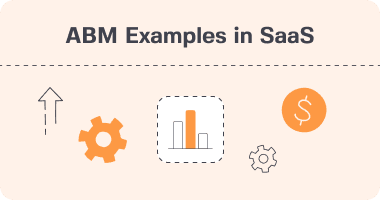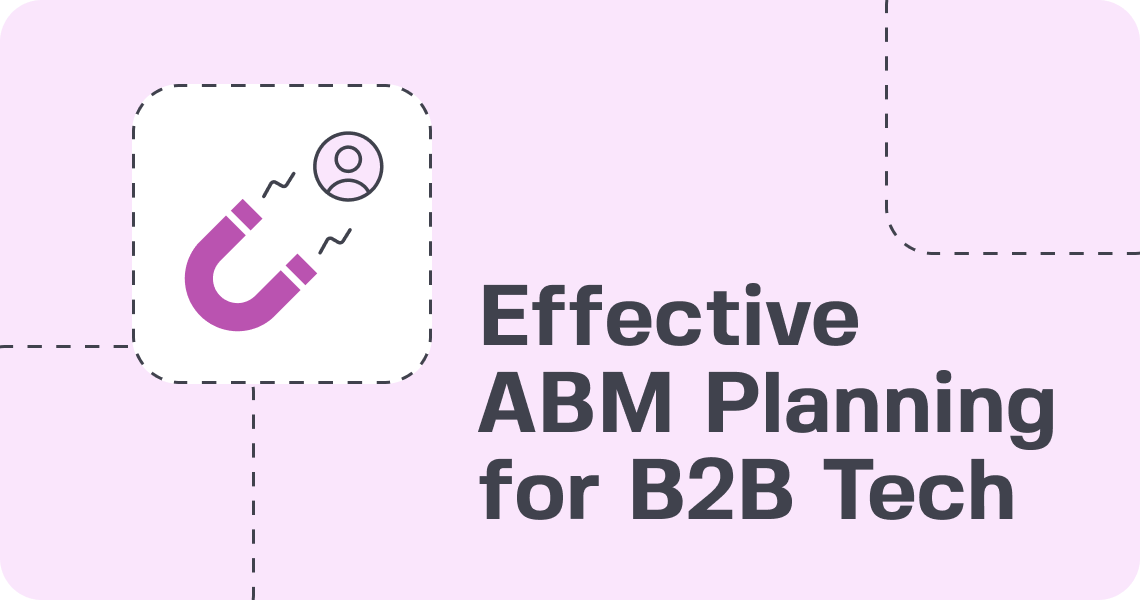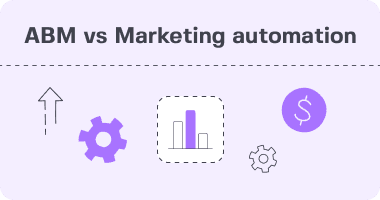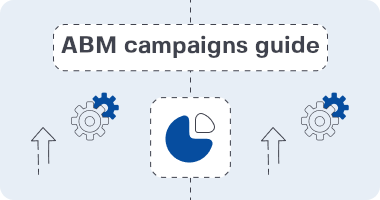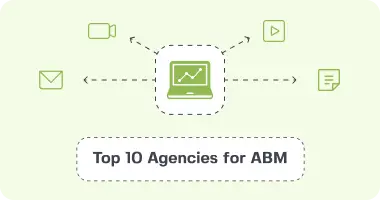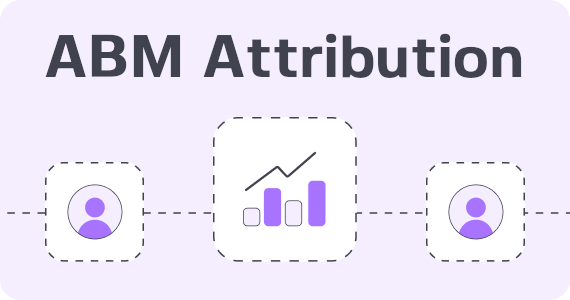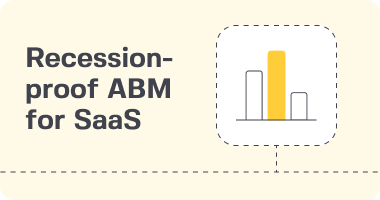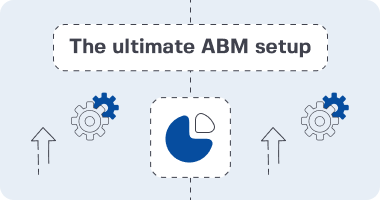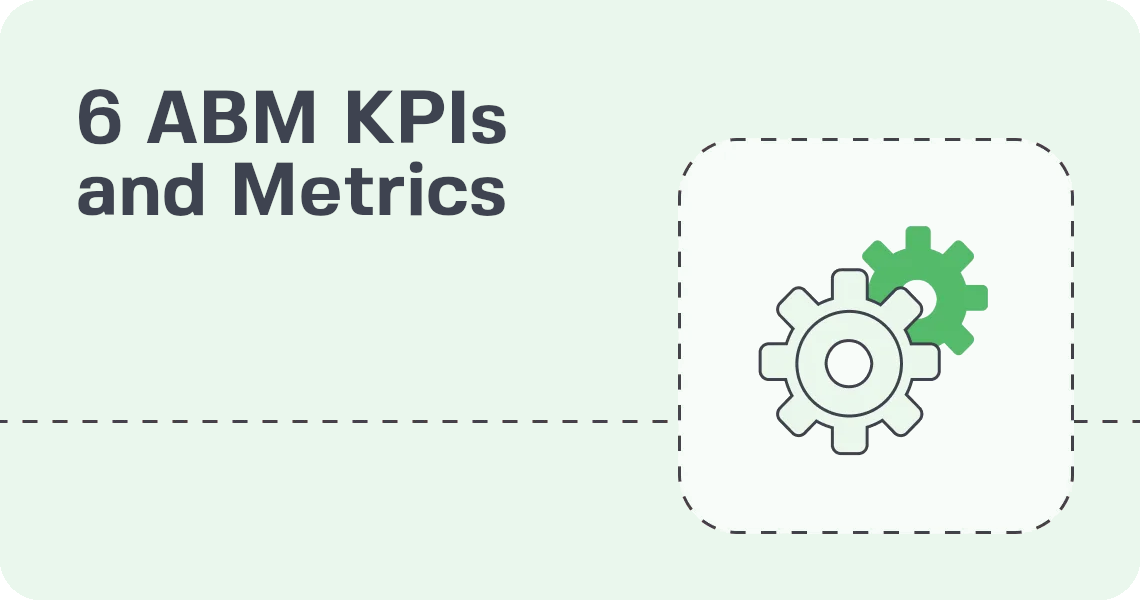The advantages of an account-based approach lie in its ability to precisely and efficiently target most valuable accounts. ABM advocates a focus on high-value, specific prospects to foster greater alignment between your sales and marketing teams.
This strategy fosters custom tactics that will resonate with specific decision makers. By speaking to their specific needs, this approach boosts relevance and engagement, fostering potential client relationships and increasing conversion rates.
Thanks to its highly measurable outcomes, ABM makes it easier for you to track performance and optimize campaigns accordingly to ensure maximum ROI. It helps eliminate wasted effort by focusing your resources on accounts that will likely yield the most value.
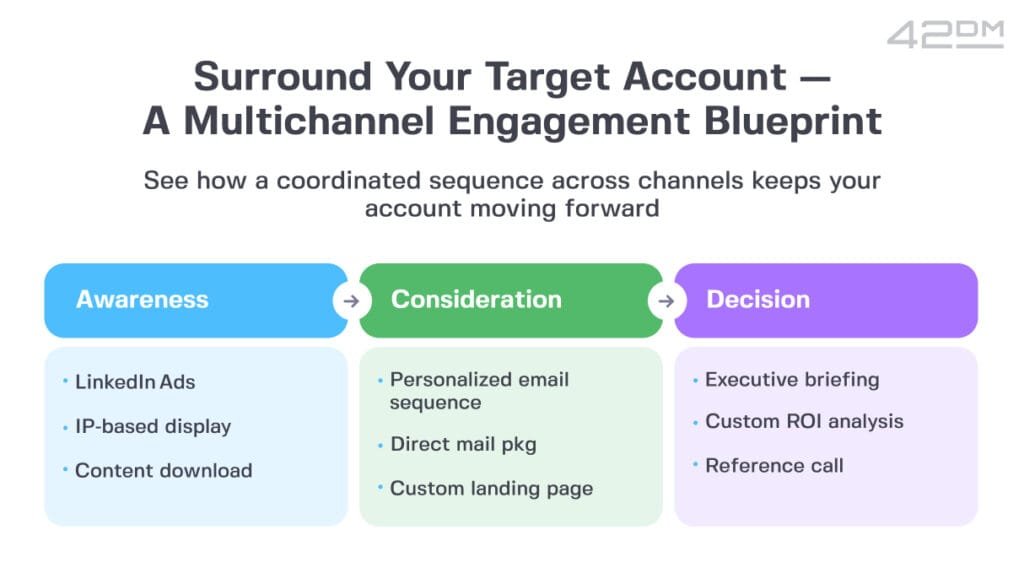
Through collaboration and data-driven insights, ABM positions your business to deliver meaningful results while building trust and loyalty with your audience. Read on to find out how ABM can revolutionize your approach to marketing.
What is Account-Based Marketing (ABM)?
Account-Based Marketing, or ABM, is a strategic approach that prioritizes targeting specific high-value accounts rather than casting a wide net over a broad audience. By concentrating efforts on accounts with the greatest potential, ABM allows businesses to allocate resources more effectively. This ensures that their B2B SaaS marketing budget and sales initiatives are focused on the opportunities most likely to yield results.
This strategy is extremely advantageous for groups pursuing B2B markets. Here, decision-making usually includes various stakeholders and requires longer sales cycles.
A key tenet of ABM is highly personalized marketing. Creating highly relevant content, messaging, and outreach for each of your target accounts’ specific needs helps establish more meaningful connections. It signals that you really get what their challenges and goals are.
Rather than pushing the same case studies and webinars to everyone via email, ABM targets them to key accounts. These assets directly speak to the pain points that matter most to a targeted company or industry.
Another major advantage of ABM is that it fosters sales and marketing alignment. When they are all working toward the same measurable goals, it helps these teams work together more efficiently and effectively. This keeps communication flowing and develops a cohesive strategy.
This alignment increases conversion rates. Both teams are now better aligned to approach high-level, key decision makers in target accounts.
Data is an integral part of ABM marketing, allowing expertsto identify and learn everything they can about their target accounts. Through insights like purchasing history, industry trends, and digital behavior, businesses can refine their strategies and prioritize the most promising opportunities.
For instance, utilizing CRM tools and analytics goes a long way to make sure that you are targeting efforts where they will have the biggest impact.
Core Benefits of Account-Based Marketing
Account-Based Marketing (ABM) presents a more targeted strategy for reaching high-value accounts, building deeper relationships, and delivering impactful outcomes. By ensuring sales and marketing teams target the same high-value customers, ABM is a powerful strategy for maximizing resources and driving greater ROI.
1. Marketing Budget Allocation Optimization
ABM makes your dollars go further by focusing on your most valuable accounts instead of wide-reaching, generic campaigns. Strategies include allocating funds to personalized campaigns for key accounts.
Additionally, it saves in ad spend waste by severely limiting the visibility of ads to audiences most likely to convert. Tracking metrics like conversion rates and engagement helps evaluate spending impact.
This is where using data analytics comes into play to make better allocation decisions and get better campaign targeting. For instance, a company targeting enterprise clients may allocate resources to custom proposals and account-specific ads, ensuring every dollar spent directly supports engagement and conversion goals.
2. Sales and Marketing Synergy
ABM aligns sales and marketing teams around common goals, which helps foster collaboration between the two groups. Collaborative planning workshops and target setting foster unified approaches.
Subsequent learning cycles feed in to refine tactics over time. A shared accountability system, like using combined KPIs, fortifies team efforts, creating more effective lead-gen and nurturing processes.
3. Multi-Threaded Engagement
By engaging all the relevant stakeholders within a target account, you guarantee you will influence decisions at all levels. Personalized emails directly to the C-suite, targeted advertising to key influencers of the decision, and industry-specific webinars are all highly effective account-based marketing tactics.
Having multiple channels fosters ongoing engagement, keeping relationships strong throughout the organization.
4. Achieving Differentiation in the Market
Brands that recognize and address specific needs of the target accounts will rise above others. Using insights from customers allows you to develop customized value propositions that resonate with each account’s specific needs and priorities.
Case studies showing these differentiating, successful ABM campaigns in action portray differentiation in terms of building credibility and trust.
5. Effective Targeting of High-Value Accounts
Knowing which accounts can generate revenue while strategically aligning with your business helps narrow your focus. Implementation market research reveals prospects’ challenges and needs, allowing you to target them accurately.
Continually fine-tuning account lists helps to make sure your sights are always trained on the best opportunities to pursue.
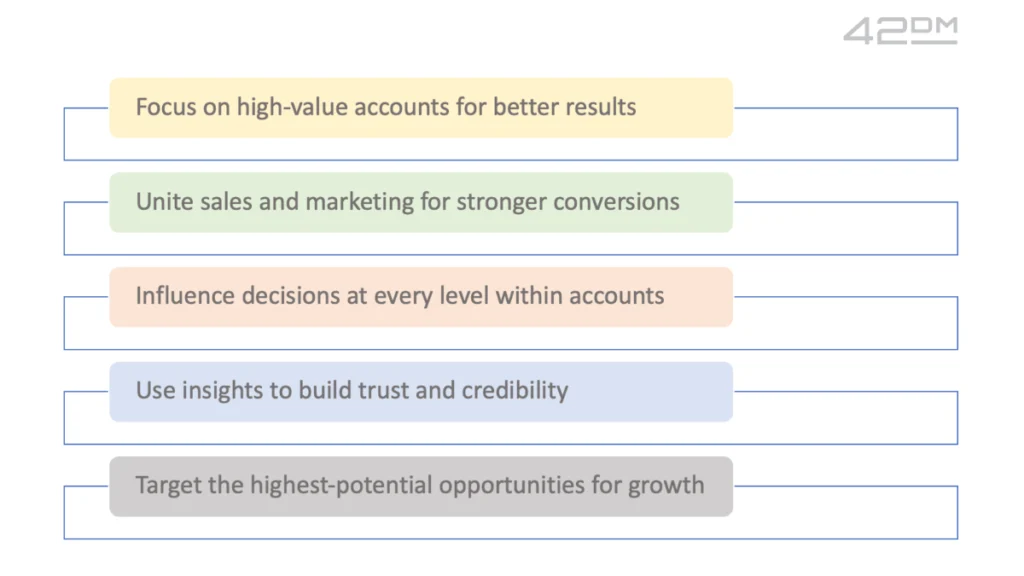
ABM Strategies for Pipeline Acceleration
Account-Based Marketing (ABM) does exactly that—accelerates your pipeline. It focuses on high-value accounts using tailored strategies that move them most efficiently through the sales funnel. It aligns sales and marketing efforts with a unified goal: delivering measurable business outcomes.
By harnessing data and promoting collaboration, ABM shortens the often lengthy B2B sales cycle. Finally, it personalizes outreach to produce faster, more effective results.
Teamwork Between Marketing and Sales
Collaboration between marketing and sales is the cornerstone of ABM success. Having these discussions on a regular basis helps both teams stay on the same page in terms of strategy and movement with target accounts.
Transparent data sharing, including insights into customer behavior and preferences, builds rapport and trust while providing greater insight into client needs. Joint metrics, such as account engagement levels or pipeline velocity, foster accountability and a goodwill mutual understanding of success.
Cross-training can build empathy, helping teams appreciate each other’s challenges while working toward larger deal sizes.
Leverage Data to Identify Key Accounts
Data are crucial to identify and prioritize the highest-potential accounts. CRM platforms and analytics tools can be used to better understand customer behavior, allowing marketers to build out those profiles of their ideal customer.
Keeping a finger on the pulse of industry trends and what your competitors are doing reveals compelling emerging opportunities for engagement. Consider that 61% of organizations leveraging ABM experience better quality pipeline opportunities, letting them focus on the best prospects and driving more consequential revenue growth.
Select Optimal Digital Channels
Understanding which digital channels are the most effective helps you engage them in a targeted way. The digital key platforms such as LinkedIn are designed for professional audiences, while email marketing can provide highly tailored messages.
By measuring performance on these channels, you can better refine future strategies, improving ROI. This is the hallmark of ABM with 6x revenue increases frequently cited.
Develop Tailored Content and Messaging
Personalized relevant and valuable content provides the information they need in a more compelling way. A/B testing optimizes messaging effectiveness, ensuring consistency across touchpoints.
Solving for pain points contributes to more significant deals overall and it’s responsible for a 500% increase in account traffic.
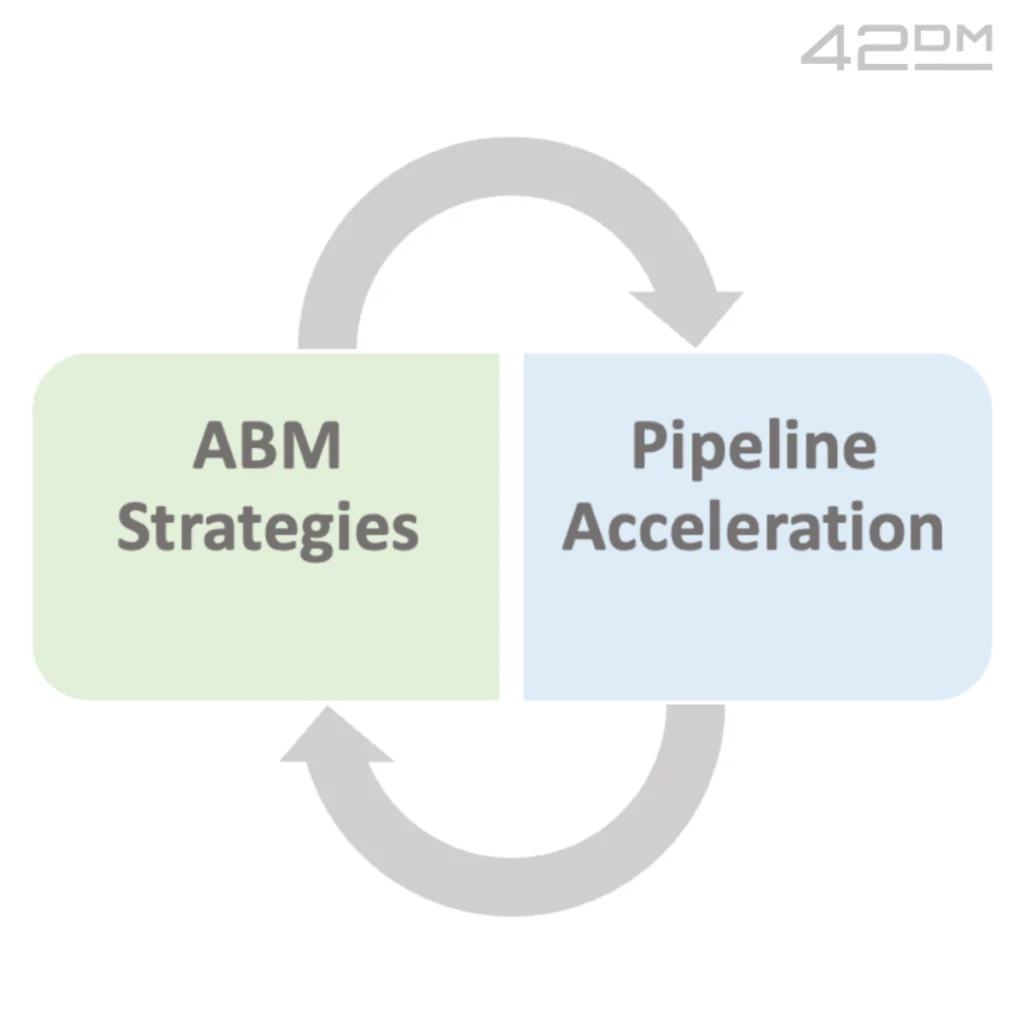
Ensure Consistent Customer Experiences
Visualizing the customer journey helps identify the most important touchpoints. Extensive training helps create cohesive interactions in every channel, with input from omnichannel customer feedback loops that drive ongoing refinements.
Engage and Attract Target Accounts
This is where targeted outreach strategies come in, outreach strategies that resonate with accounts, utilizing personalized tactics to creatively address modern pain points.
Social media and online advertising can leverage this increased visibility, helping you make the deepest connections to the most important decision-makers.
Monitor and Evaluate Performance
Account-based marketing KPIs — such as engagement rates and conversion metrics — help track your ABM success. Then, by regularly reviewing these insights, you can spot where campaigns or assets need refining.
Consequently, 19% of companies say they’ve hit more than 30% revenue growth with ABM.
Communicate with Buying Committees
Developing personalized messages and content for various stakeholders involved in buying committees can help create a better decision-making experience.
Developing relationships with these committee members creates goodwill that speeds up the sales process.
How ABM Improves Customer Engagement
Account-Based Marketing (ABM) is a proven strategy that improves customer engagement by focusing efforts on developing high-value, personalized interactions with key target accounts. ABM takes a laser focus to the unique needs and goals of every single account. By doing this, it is able to provide customized experiences that make the customer feel valued and understood.
This approach creates space for more meaningful and inclusive partnerships. Every single engagement is customized to fit with the specific goals of the account. ABM enables you to provide customized solutions that speak to overcoming scalability hurdles head on for customers within the software space. By personalizing every interaction, this approach develops customer trust, eventually establishing long-term loyalty.
Highly personalized content becomes a key ingredient in this process. Create personalized content that resonates with each account’s industry, challenges, goals, and more. This will further demonstrate your deep understanding of their business.
A healthcare provider would be much more amenable to a case study that describes your solution’s effectiveness in achieving regulatory compliance. They won’t be as responsive with a high-level look at what you bring to the table. This kind of specificity opens eyes and engages ears. It also increases their engagement by showing them that you’re committed to addressing what matters to them most.
Adding multi-channel strategies even more increases engagement by creating frequent and meaningful touchpoints wherever customers are looking to engage. Whether it’s via email, social media, or phone outreach, ABM makes sure every channel presents a unified message. This kind of strategy continues to engage the customer throughout every stage of their journey, creating a smooth and consistent experience.
Keeping them engaged means you need to continue to communicate. Consistent touchpoints, whether check-ins or progress updates, allow you to continue adding value, fostering the relationship while keeping your solution top-of-mind.
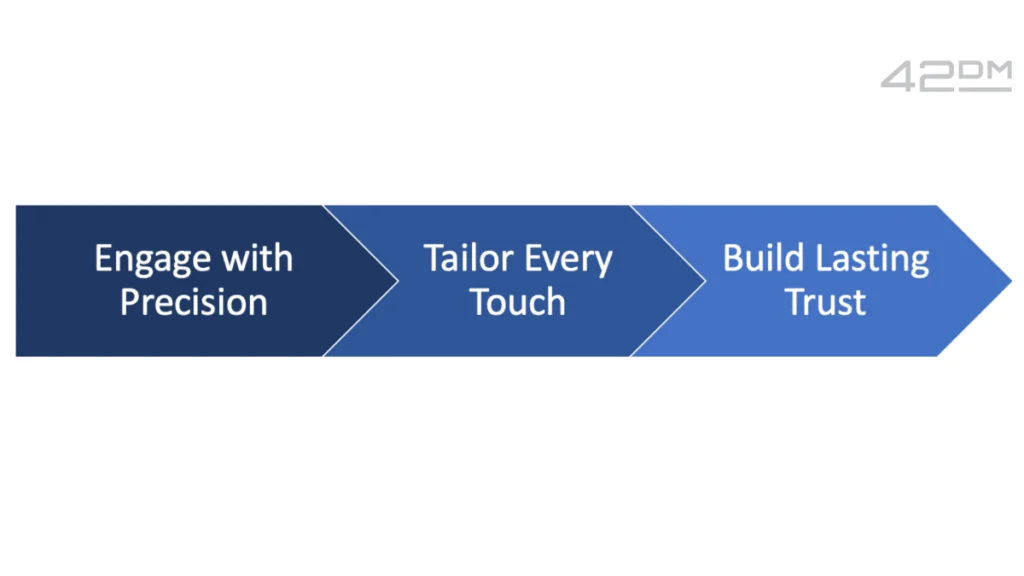
How to Overcome ABM Implementation Challenges
Account-based marketing framework (ABM) is a powerful, transformational approach that marketing and sales teams should embrace. ABM implementation poses its own challenges that need to be addressed head-on. These challenges might be misalignment between sales and marketing teams, pushback from stakeholders, or the difficulty of personalization.
- Starting small by piloting ABM with a few high-value accounts allows you to showcase measurable ROI early on, building confidence in the approach. Because ABM is a highly structured framework, your efforts will feel more strategic and targeted, which goes a long way toward fighting that initial skepticism.
- Getting buy-in from other stakeholders is essential to the success of any ABM endeavor. This starts with clear, open dialogue on the future payoffs—like better customer acquisition and retention. Getting everyone on the same page is crucial.
- The key to overcoming this pushback and creating meaningful collaboration is aligning goals across departments. Setting realistic expectations is important. Educating stakeholders about what’s possible with ABM helps set and change expectations. As a result, it can close deals 40% faster and increase annual revenue growth by 20%, establishing trust along the way.
- Adopting best practices further smooths ABM implementation. These include using data to identify and prioritize high-value accounts. Providing appropriate creative templates and assets to facilitate collaboration is also essential.
- Leveraging technology to personalize every interaction is a critical component. Additionally, monitoring performance metrics to refine strategies continually is necessary for ongoing success.
- ABM learning never stops, as it’s too dynamic a practice to be static. By keeping a pulse on market trends and shifting customer needs, businesses are better equipped to reach target accounts when they need them most at the right time and place.
Though deals sometimes aren’t closed for many months after initial conversations, a strategic, knowledge-infused process produces significant returns on investment.
Account-Based Marketing is no longer a luxury — it’s a strategic imperative for SaaS and Fintech companies aiming to scale efficiently and build lasting client relationships. By aligning sales and marketing, leveraging data insights, and focusing on high-value targets, ABM delivers measurable ROI and deeper engagement. If you’re ready to accelerate your growth with a proven strategy, partner with an experienced account based marketing agency like 42DM that understands the B2B tech landscape and delivers results that matter.


